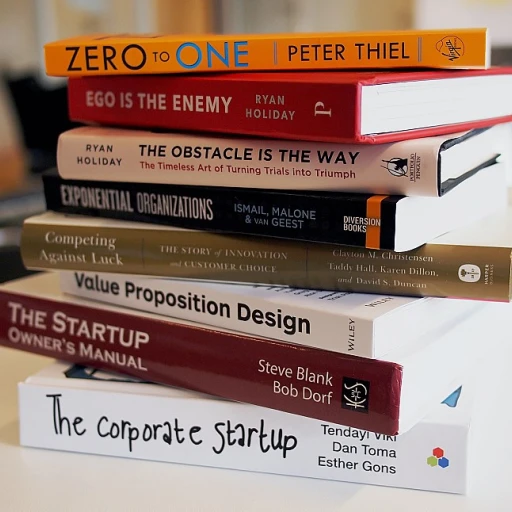
Understanding Full Cycle Recruiting
Diving into Full Life Cycle Recruiting
Full cycle recruiting, commonly known as end-to-end recruitment or full cycle recruitment, is a comprehensive hiring process encompassing every stage from sourcing to onboarding. This approach ensures a seamless transition for both the candidate and the organization, addressing each aspect of the recruitment process to create a cohesive and efficient experience.
When the emphasis is placed on this holistic recruitment model, it becomes integral for recruiters to understand the different stages involved. Key elements such as job descriptions, sourcing strategies, and screening methods are vital in aligning the talent acquisition with organizational needs. The recruiter takes on multiple roles throughout the cycle, ensuring they can successfully attract, evaluate, and eventually hire top candidates.
An effective full cycle recruiting strategy involves collaboration between recruiters, recruiting teams, and hiring managers to identify the best practices for a successful hiring process. It's essential to understand that sourcing is not just about filling a position quickly but is about finding the right talent that meets both current and future company needs. A good recruitment strategy is founded on understanding these needs, making the interview discussions more meaningful and candidate-centric.
The full cycle recruiting process is not just about hiring; it's about managing a candidate’s experience from initial contact through eventual retention. Candidate experience, which is discussed further in subsequent sections, plays a significant role in maintaining your company’s reputation and attracting top talent in the industry.
Moreover, mastering the art of full cycle recruiting requires one to embrace technology and innovation in the recruitment process. Leveraging platforms such as social media, recruitment software, and data analytics can offer great insights and streamline the recruitment cycle. For those interested in understanding more about how such roles function within an organization, I recommend exploring the option of a comprehensive guide on the role of a full cycle recruiter.
Sourcing Top Tech Talent
The Significance of Crafting a Strong Job Description
In the competitive landscape of tech recruitment, the process of sourcing top talent begins with crafting a compelling job description. This document serves as the foundation for the entire recruitment process by outlining the essential skills and responsibilities expected of potential candidates. By providing clarity, both recruiters and hiring managers can accurately assess whether applicants align with the team's needs.
Leveraging Multiple Sourcing Channels
To effectively fill a position with top talent, cycle recruiters should utilize a diverse array of sourcing channels. By tapping into professional networks, job boards, employee referrals, and even social media platforms, recruiters can broaden the pool of potential candidates and enhance the chances of attracting skilled professionals.
Harnessing Employer Branding
A robust employer branding strategy can significantly impact the recruitment process. By showcasing the company culture and values, recruiters can attract candidates who not only possess the necessary technical skills but also resonate with the organization's ethos and long-term vision. A well-executed branding initiative strengthens the company's position in the minds of potential applicants.
Building Relationships with Passive Candidates
Effective sourcing isn't solely about active job seekers. Engaging passive candidates—those not actively looking—can be a strategic move in cycle recruitment. By nurturing these relationships, cycle recruiters ensure a continuous supply of potential hires, ready to be approached when suitable openings arise.
Evaluating Sourcing Effectiveness
A critical aspect of the recruiting full life cycle involves regularly reviewing the effectiveness of sourcing strategies. Setting measurable metrics to evaluate the success of various channels will allow recruiters to optimize their efforts and refocus resources on the most rewarding initiatives. This evaluation ensures the hiring process remains dynamic and responsive to the constantly evolving tech landscape.
Screening and Interviewing Candidates
Efficient Evaluation and Engaging Interviews
Screening and interviewing candidates effectively are vital components of a successful recruitment process in the tech industry. With its unique challenges, tech hiring demands that recruiters possess keen expertise and the capacity for close collaboration with hiring managers to identify the perfect fit. The initial screening should emphasize a comprehensive understanding of the job description and the specific skills required for the role. Leveraging technology is pivotal in this stage—tools such as applicant tracking systems and artificial intelligence can streamline the sorting of applications, making it easier to identify top talent early in the cycle. Main steps to consider during the screening process:- Resume Analysis: Focus not merely on past titles but on achievements and relevant experiences that align with the role. Evaluate both technical skills and cultural fit.
- Skill Assessments: Implement coding tests or technical challenges. These assessments offer insights into a candidate's problem-solving abilities and ensure their skills match the job responsibilities.
- Structured Interviewing: Standardize questions across all candidates for fairness and consistency, while allowing flexibility to delve deeper when necessary.
- Behavioral Insights: Beyond technical expertise, explore situational and behavioral questions that reveal how candidates handle real-life scenarios and teamwork challenges within the tech sphere.
- Showcase the Team and Culture: Share insights into the team dynamic and company culture. Introducing candidates to potential teammates can enhance their candidate experience and increase interest in the job offer.
The Importance of Candidate Experience
Creating a Positive Candidate Journey
In the full cycle recruiting process, ensuring a favorable candidate experience is paramount. This experience can greatly influence a candidate's perception of the company and affect their decision to accept a job offer. A well-structured recruitment process prioritizes effective communication and respectful interactions from the initial contact to the final stages of hiring.
For recruiters and hiring managers, it is essential to recognize that every phase of the recruitment process, from sourcing to onboarding, leaves an impression. Candidates today are as likely to share their experiences on social media as they are to discuss them in interviews. Therefore, paying attention to every detail is crucial.
Best Practices for Maximizing Candidate Experience
- Clear Job Descriptions: Ensure that your job descriptions are detailed yet concise, helping candidates understand the role and its requirements without ambiguity.
- Timely Communication: Update candidates regularly on their application status to sustain their interest and demonstrate your company's efficiency.
- Respectful Interviews: Ensure that interviews respect candidates' time and give them an opportunity to showcase their skills and talents effectively.
- Constructive Feedback: Provide feedback to candidates promptly, even if they do not progress to the next stage. This helps in building goodwill and trust.
Ultimately, the goal is to make candidates feel valued and respected throughout the hiring process. This approach not only boosts your employer brand but also increases the likelihood of acquiring top talent and achieving better retention rates once candidates are onboarded. Emphasizing candidate experience in the recruitment life cycle is a significant stepping stone towards building a resilient and motivated team.”
Negotiating Offers and Closing the Deal
Sealing the Deal with a Compelling Offer
The negotiation phase is a critical juncture in the hiring process. It's where the rubber meets the road, determining whether your efforts in sourcing and interviewing the right talent will payoff. For cycle recruiters and hiring managers alike, understanding how to craft and present an attractive job offer is paramount. Taking into account the competitive landscape of tech recruitment, customize your job offers to reflect the prospective candidate’s skills, experience, and the unique value they bring to the team. This demonstrates a level of respect and recognition for their talents, setting a positive tone for the candidate experience.- Clear Communication: From salary expectations to role responsibilities, every aspect of the offer should be transparent, leaving no room for ambiguity.
- Compelling Compensation Packages: In a market flooded with tech job opportunities, a well-rounded package can be a deciding factor. Include benefits like flexible working arrangements and professional development opportunities.
- Highlighting Growth Opportunities: Encourage acceptance by showcasing potential career paths within your organization, reinforcing long-term collaboration.
Onboarding and Retention Strategies
Ensuring Seamless Integration and Retention
The role of the recruiter does not stop at extending job offers to candidates. For a successful full life cycle in tech hiring, onboarding and retention play critical roles in keeping top talent embedded within the organization. A smooth onboarding process can make a profound impact on a new hire's perception and long-term commitment. Incorporating best practices, such as a comprehensive introduction to the company culture, structured training programs, and clear job descriptions, helps align the new team member's objectives with the company's goals. Leveraging social media and communication platforms can also facilitate better relationship-building within teams, enhancing the candidate experience right from the start. Here are some effective strategies to ensure a seamless onboarding and retention process:- Introduce personal mentoring systems to guide candidates through their initial phases.
- Establish regular feedback loops to address any concerns quickly and effectively.
- Promote a collaborative environment where skills can be shared and refined.
- Provide growth opportunities and clear pathways for career advancement.












